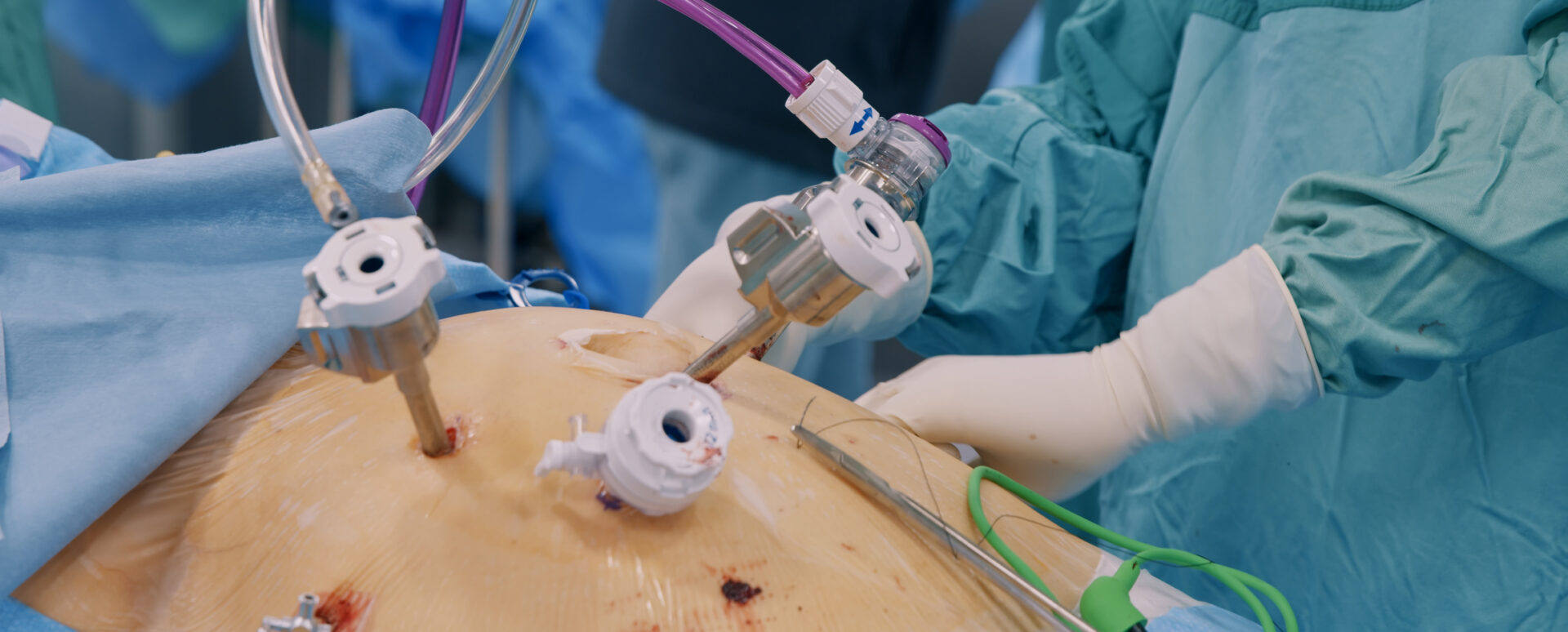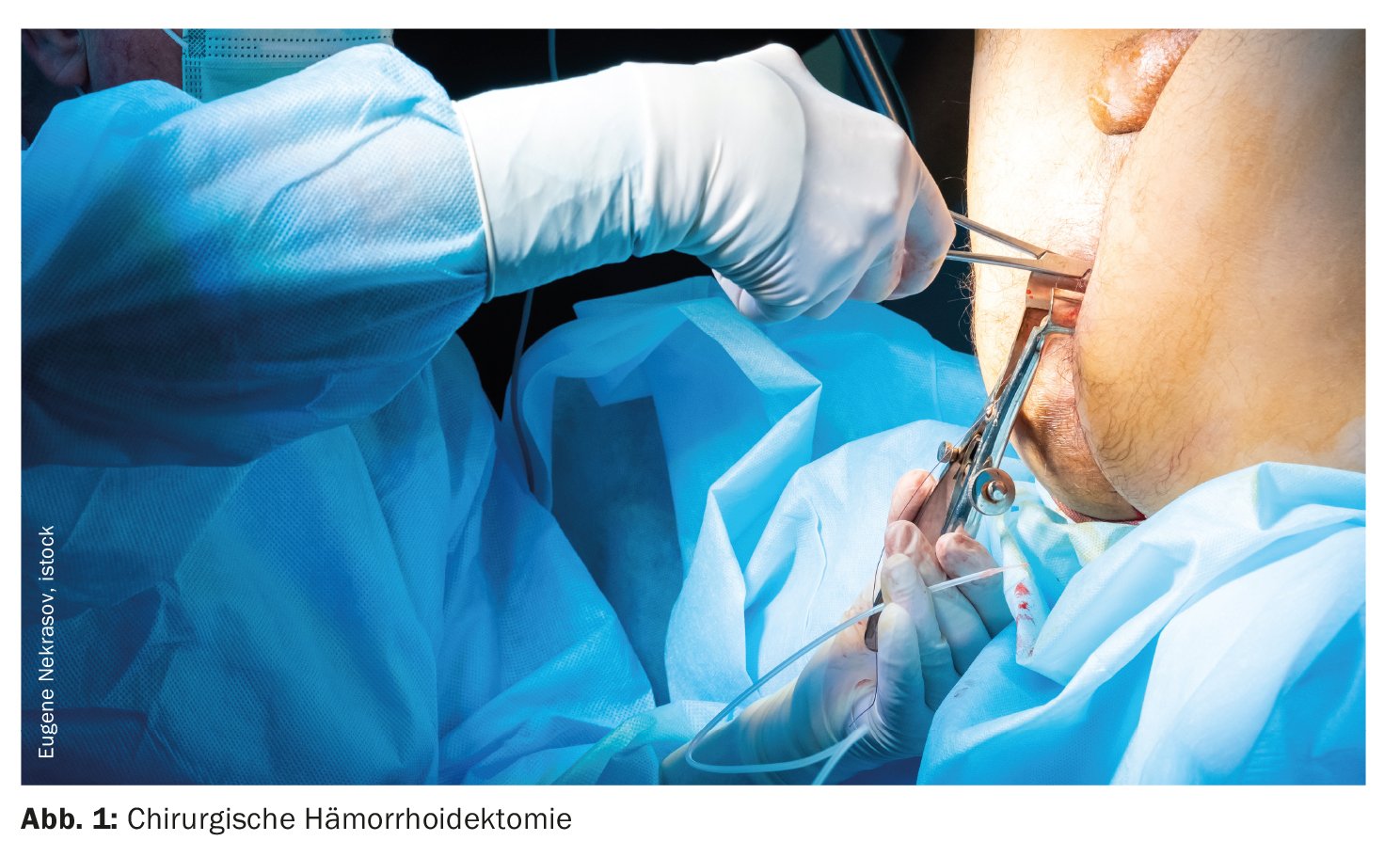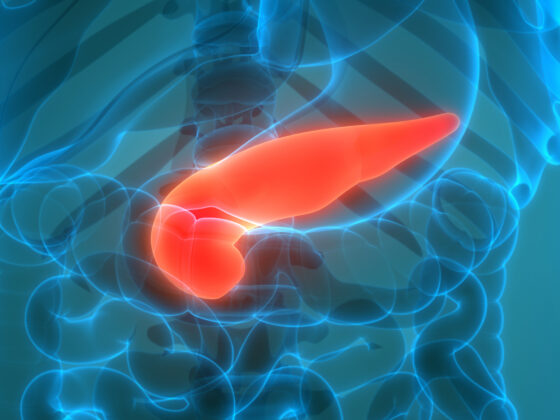Aspects of the lower gastrointestinal tract, parietology and perioperative management are covered. Colon and rectal carcinoma are among the most common tumor diseases worldwide; in Switzerland, colorectal carcinoma is the third most common cancer in men and the second most common in women. Minimally invasive surgery has now become established for both colon and rectal cancer.
This article is a continuation of the Visceral Surgery Update – Part 1, which was published in GASTROENTEROLOGIE PRAXIS 2/2023 and focused on the upper gastrointestinal tract. At Part 2 deals with aspects of the lower gastrointestinal tract, parietology and perioperative management. For the methodology, please refer to the explanations in Part 1. With regard to the CME questions and the acquisition of CME points, the two parts are independent of each other.
Colorectal carcinoma
Colon and rectal carcinoma are among the most common tumor diseases worldwide; in Switzerland, colorectal carcinoma is the third most common cancer in men and the second most common in women [1]. Minimally invasive surgery has now become established for both colon and rectal cancer. After it was shown that in high-risk patients with locally advanced rectal cancer, total neoadjuvant radio-chemotherapy prior to oncological resection results in significantly better three-year freedom from recurrence [2], the long-term data from the same cohort are rather sobering: after R0 or R1 resection, local recurrences occurred significantly more frequently in the intervention group in the long-term course (10.2% vs. 6.1%; p=0.027). Risk factors for local recurrence in the multivariate analysis were study treatment, positive circumferential resection margins, local tumor metastases and lymph node status [3]. Possible explanations are the differences in irradiation technique, but also surgical aspects (quality of mesorectal excision).
Anastomotic insufficiency is still a feared complication in rectal carcinoma, but also in colon carcinoma. Whether this has an influence on tumor-specific endpoints was investigated in a post-hoc analysis of the COLOR and COLOR II patient collectives. In colon carcinoma, anastomotic insufficiency has no relevant influence on the local recurrence rate, overall survival and disease-free survival. Patients with rectal cancer showed an increased local recurrence rate (HR 2.96; 95% CI 1.38-6.34) and poorer disease-free survival (HR 1.67; 95% CI 1.16-2.41) after the occurrence of anastomotic insufficiency, with no significant reduction in overall survival. The authors conclude that patients with anastomotic insufficiency after rectal resection should be followed up more closely [4]. These findings should have an influence on the surgical-technical procedure so that the avoidance of anastomotic insufficiencies actually has top priority.
Diverticulitis
A recently published study investigated the risk of recurrence of (sigmoid) diverticulitis after sigmoid resection. In 364 patients examined, a recurrence risk of 7% was found after a follow-up period of almost five years. Risk factors for recurrence were young patient age and several relapses before the first operation [5]. Other studies show a mixed picture: 1.1% after five years and 2.1% after ten and 15 years [6] or 8.6% after three years [7].
Antibiotic treatment or “omitting” it in uncomplicated sigmoid diverticulitis remains controversial: The most recent Cochrane review on the topic shows that the effect of antibiotic therapy with regard to complications, emergency surgery, recurrences and long-term complications is “uncertain”, with “low” quality of the available evidence [8].
Acute appendicitis
Acute appendicitis is one of the most common general surgical conditions. The antibiotic treatment of uncomplicated appendicitis has been a much-discussed topic for years and is being further differentiated by new studies. At first glance, two recent meta-analyses, each with over 3000 patients included, showed contradictory results: In the first study, non-surgical therapy was found to be equivalent to surgical therapy in terms of 30-day treatment success (RR 0.85; 95% CI 0.66-1.11), although the authors went on to describe that in the antibiotic cohort, an average of 18% of patients still had to undergo appendectomy within the first year [9]. In the second meta-analysis, appendectomy was clearly superior to antibiotic therapy (RR 0.75; 95% CI 0.63-0.90), whereby the longest available follow-up of one year was selected here [10]. Antibiotic therapy may be a valid alternative to appendectomy for uncomplicated appendicitis, but various disadvantages of antibiotic therapy should be mentioned: longer hospital stay, up to 6 times more frequent readmission within the first year, and – at least in the second study – a very significantly lower success rate after one year of 63.0% vs. 91.7% for appendectomy [10]. In the long-term course of up to 20 years with data from the first randomized studies on the non-surgical treatment of appendicitis, it was also shown that almost a third of patients still underwent appendectomy in the long-term course and, moreover, that many more patients from the non-surgical group had to be examined by an emergency physician in the course of the disease due to non-specific complaints [11]. Appendectomy remains the gold standard, even in the treatment of uncomplicated appendicitis.
Hemorrhoids
Anal bleeding is the leading symptom of hemorrhoids and should be further evaluated initially to rule out carcinoma. If hemorrhoids are confirmed, they are divided into 4 grades and treated differently. The most common classification according to Goligher showed clear weaknesses in the differentiation between grade II and III, which are relevant for the indication of surgical hemorrhoidectomy [12]. In a retrospective single-center analysis, surgical hemorrhoidectomy was clearly superior to rubber band ligation for third-degree hemorrhoids [13]. Caution is advised in patients with chronic inflammatory bowel disease and hemorrhoids: Complication rates after hemorrhoidectomy are significantly increased, especially in patients with Crohn’s disease [14].
Anal fistula and anal fissure
In the treatment of acute anal fissure, lateral sphincterotomy is still considered the gold standard, although it is associated with significant long-term incontinence rates [15]. A randomized controlled study from the Netherlands showed that pelvic floor physiotherapy is associated with a significant reduction in pelvic floor tone and better healing rates of anal fissures [16], and that sphincter tone is still significantly lower one year later compared to baseline [17].
Fecal incontinence
Women have a significantly increased risk of fecal incontinence, and the prevalence of anal hypocontractility and hypotonia are almost twice as high as in men [18]. As a treatment option, sacral neuromodulator implantation (SNM) provides good long-term results, although problems in terms of subjective loss of effect or pain often occur within the first year after implantation. Reprogramming can achieve an improvement in just over half of cases of loss of efficacy and in three-quarters of cases of pain [19].
Inguinal hernia
Open and minimally invasive procedures are still available as alternatives, although robotic procedures should also be mentioned in the meantime. An initial meta-analysis showed that patients who undergo robotic surgery are more often slightly sicker (ASA >2) and more often undergo bilateral surgery. The results after robotic inguinal hernia surgery compared to laparoscopic surgery are initially the same, with increased operating time and significantly higher material costs [20]. However, the comparative analyses published to date are difficult to interpret, and the material costs for robotic surgery have already decreased significantly in the last few years.
Postoperative urinary retention is a troublesome complication after any abdominal surgery and occurs in 1-22% of cases after inguinal hernia surgery. For the first time, the effect of propyhlactic perioperative catheter insertion in laparoscopic inguinal hernia surgery was investigated in a randomized controlled trial. Catheter insertion did not reduce the rate of urinary retention, even in the subgroup analysis of older men with benign prostatic hyperplasia and anticholinergic medication during surgery [21]. Routine catheter insertion can therefore not be recommended for inguinal hernia surgery. In addition to the methodology, the fact that patients with benign prostatic hyperplasia as well as after previous open inguinal surgery were included, i.e. real-world data, is particularly impressive.
Ventral abdominal wall hernias
After laparotomies, scar hernia may occur in up to 30%. The prevention of incisional hernias through an optimized technique of abdominal wall closure has been the subject of research for years. The results of the ESTOIH study were published here in 2022, showing that the short-stitch technique resulted in a significant reduction in the combined endpoint (burst abdomen and incisional hernia), with the primary endpoint showing a non-significant difference. The authors speculate that the unusually low hernia rate in the control group could be responsible [22].
Rosen et al. published an important paper showing that conventional plastic meshes can also be implanted in contaminated hernias (clean-contaminated and contaminated) , as these have significantly lower recurrent hernia rates with the same risk profile as porcine meshes [23]. In particular, it must be mentioned that the biological mesh entails an almost tenfold higher risk of incisional hernia in the – relatively short – follow-up period of two years.
Intraperitonealonlay mesh (IPOM) has come under increasing pressure in recent years, partly because of the relatively high recurrence rates in the long-term course, but also because of the increased complication rates with the mesh (fistulas, adhesions). In addition to the classic open retromuscular mesh implantation, eTEP (enhanced view Total Extraperitoneal Repair) can be considered as an alternative. A meta-analysis has now compared IPOM and eTEP for the first time. Postoperative pain and hospital stay were significantly lower with eTEP, but with a longer operation time [24]. These advantages could be further enhanced in the near future by using the surgical robot as a robotic eTEP.
Antibiotics
Preoperative bowel preparation is still a debated topic, even though bowel irrigation has not been shown to reduce the rate of anastomotic insufficiency and wound infection. A study has now been published that investigated the effect of preoperative oral antibiotics on the wound infection rate. It was shown that a single dose of ornidazole on the day before an elective colon resection not only significantly reduces the rate of wound infections, but also shows fewer major complications overall [25]. Promising results were already achieved in 2020 with a more common medication (ciprofloxacin and metronidazole), which were published at a high level [26].
Perioperative medicine
Rapid recovery after surgery represents an important focus in surgery. The stress reaction with the release of neuroendocrine mediators causes an imbalance in homeostasis with potential organ complications. The fast-track concept was developed many years ago to reduce or avoid this. Particular attention is paid to optimal pain management, avoidance of postoperative nausea, balanced volume management, minimization of access trauma, and rapid food buildup and mobilization [27].
In pancreatic surgery, a meta-analysis in 2022 showed that the implementation of an ERAS concept was beneficial in all endpoints investigated [28]. Similar results with a poorer database had previously been shown for colorectal surgery [29].
Malnourished patients present a major challenge perioperatively. Preoperatively, the nutritional status of patients at risk should be systematically assessed and optimized with nutritional supplements [30].
One hot topic is prehabilitation, in which the overall status of patients is systematically recorded and patients are then trained and supported in a structured manner in order to better meet the requirements of major abdominal surgery. A recently published Umbrella review summarizes the existing reviews, as does a Cochrane review that examines the studies on prehabilitation before colorectal surgery [31,32]: Prehabilitation improves functional recovery and probably reduces complication rates postoperatively, although the overall summary evidence is poor.
Take-Home-Messages
- Total neoadjuvant therapy is a promising approach for rectal cancer with increased risk, especially in the long-term course.
- Antibiotic treatment of acute uncomplicated appendicitis can be considered as a treatment option in exceptional cases. The problem here is the reliable diagnosis of uncomplicated acute appendicitis. Due to the high recurrence rate, appendectomy remains the gold standard for acute appendicitis.
- In the case of chronic anal fissures, pelvic floor physiotherapy can lead to a significant improvement in muscle tone and, in the short term, to a high healing rate.
- In ventral incisional hernias, there is growing evidence against the use of biological meshes (e.g. acellular porcine collagen) and in favor of the safety of polypropylene meshes, even in the clean-contaminated and contaminated situation.
Literature:
- Statistics B for Swiss Cancer Report 2021 – Status and developments. Federal Statistical Office 2021; www.bfs.admin.ch/asset/de/19305696 (last accessed: 31.10.2023).
- Bahadoer RR, Dijkstra EA, van Etten B, et al: Short-course radiotherapy followed by chemotherapy before total mesorectal excision (TME) versus preoperative chemoradiotherapy, TME, and optional adjuvant chemotherapy in locally advanced rectal cancer (RAPIDO): a randomized, open-label, phase 3 trial. Lancet Oncol 2021; 22: 29-42.
- Dijkstra EA, Nilsson PJ, Hospers GAP, et al: Locoregional Failure During and After Short-course Radiotherapy Followed by Chemotherapy and Surgery Compared With Long-course Chemoradiotherapy and Surgery: A 5-Year Follow-up of the RAPIDO Trial. Ann Surg 2023; 278: e766-e772.
- Koedam TWA, Bootsma BT, Deijen CL, et al: Oncological Outcomes After Anastomotic Leakage After Surgery for Colon or Rectal Cancer: Increased Risk of Local Recurrence. Ann Surg 2022; 275: e420-e427.
- Mathilde A, Mege D, Monsinjon M, et al: Recurrence of diverticulitis after prophylactic sigmoidectomy: an underestimated problem? Colorectal Dis 2023; 25: 757-763.
- Waser A, Balaphas A, Uhe I, et al: Incidence of diverticulitis recurrence after sigmoid colectomy: a retrospective cohort study from a tertiary center and systematic review. Int J Colorectal Dis 2023; 38: 157.
- Giulio M, Gaia S, Andrea C, et al: Recurrent diverticulitis after elective surgery. Int J Colorectal Dis 2022; 37: 2149-2155.
- Dichman ML, Rosenstock SJ, Shabanzadeh DM: Antibiotics for uncomplicated diverticulitis. Cochrane Database Syst Rev 2022; 6: CD009092.
- de Almeida Leite RM, Seo DJ, Gomez-Eslava B, et al: Nonoperative vs Operative Management of Uncomplicated Acute Appendicitis: A Systematic Review and Meta-analysis. JAMA Surg 2022; 157: 828-834.
- Herrod PJJ, Kwok AT, Lobo DN: Randomized clinical trials comparing antibiotic therapy with appendicectomy for uncomplicated acute appendicitis: meta-analysis. BJS Open 2022; 6: zrac100.
- Pátková B, Svenningsson A, Almström M, et al: Long-Term Outcome of Nonoperative Treatment of Appendicitis. JAMA Surg 2023; 158: 1105-1106.
- Dekker L, Han-Geurts IJM, Grossi U, et al: Is the Goligher classification a valid tool in clinical practice and research for hemorrhoidal disease? Tech Coloproctology 2022; 26: 387-392.
- Dekker L, Bak MTJ, Bemelman WA, et al: Hemorrhoidectomy versus rubber band ligation in grade III hemorrhoidal disease: a large retrospective cohort study with long-term follow-up. Ann Coloproctology 2022; 38: 146-152.
- Grossi U, Gallo G, Di Tanna GL, et al: Surgical Management of Hemorrhoidal Disease in Inflammatory Bowel Disease: A Systematic Review with Proportional Meta-Analysis. J Clin Med 2022; 11: 709.
- Marti L, Post S, Herold A, et al: S3 guideline: Anal fissure: AWMF registration number: 081-010. coloproctology 2020; 42: 90-196.
- Van Reijn-Baggen DA, Elzevier HW, Putter H, et al: Pelvic floor physical therapy in patients with chronic anal fissure: a randomized controlled trial. Tech Coloproctology 2022; 26: 571-582.
- Van Reijn-Baggen DA, Elzevier HW, Putter H, et al: Pelvic floor physcal therapy in patients with chronic anal fissure: long-term follow-up of a randomized controlled trial. Int J Colorectal Dis 2023; 38: 3.
- Rasijeff AMP, García-Zermeño K, Di Tanna GL, et al: Systematic review and meta-analysis of anal motor and rectal sensory dysfunction in male and female patients undergoing anorectal manometry for symptoms of faecal incontinence. Colorectal Dis Off J Assoc Coloproctology G B Irel 2022; 24: 562-576.
- Desprez C, Grange A, Gourcerol G, et al: Is sacral nerve modulation reprogramming effective after permanent implantation for faecal incontinence? Colorectal Dis Off J Assoc Coloproctology G B Irel 2022; 24: 754-763.
- Solaini L, Cavaliere D, Avanzolini A, et al: Robotic versus laparoscopic inguinal hernia repair: an updated systematic review and meta-analysis. J Robot Surg 2022; 16: 775-781.
- Fafaj A, Lo Menzo E, Alaedeen D, et al: Effect of Intraoperative Urinary Catheter Use on Postoperative Urinary Retention After Laparoscopic Inguinal Hernia Repair: A Randomized Clinical Trial. JAMA Surg 2022; 157: 667-674.
- Fortelny RH, Andrade D, Schirren M, et al: Effects of the short stitch technique for midline abdominal closure on incisional hernia (ESTOIH): randomized clinical trial. Br J Surg 2022; 109: 839-845.
- Rosen MJ, Krpata DM, Petro CC, et al: Biologic vs Synthetic Mesh for Single-stage Repair of Contaminated Ventral Hernias: A Randomized Clinical Trial. JAMA Surg 2022; 157: 293.
- Li J, Wang Y, Wu L: The Comparison of eTEP and IPOM in Ventral and Incisional Hernia Repair: A Systematic Review and Meta-analysis. Surg Laparosc Endosc Percutan Tech 2022; 32: 252-258.
- Futier E, Jaber S, Garot M, et al: Effect of oral antimicrobial prophylaxis on surgical site infection after elective colorectal surgery: multicentre, randomized, double blind, placebo controlled trial. BMJ 2022; 379: e071476.
- Espin Basany E, Solís-Peña A, Pellino G, et al: Preoperative oral antibiotics and surgical-site infections in colon surgery (ORALEV): a multicentre, single-blind, pragmatic, randomized controlled trial. Lancet Gastroenterol Hepatol 2020; 5: 729-738.
- Bardram L, Funch-Jensen P, Jensen P, et al: Recovery after laparoscopic colonic surgery with epidural analgesia, and early oral nutrition and mobilization. The Lancet 1995; 345: 763-764.
- Kuemmerli C, Tschuor C, Kasai M, et al: Impact of enhanced recovery protocols after pancreatoduodenectomy: meta-analysis. Br J Surg 2022; 109: 256-266.
- Lohsiriwat V, Jitmungngan R, Chadbunchachai W, Ungprasert P: Enhanced recovery after surgery in emergency resection for obstructive colorectal cancer: a systematic review and meta-analysis. Int J Colorectal Dis 2020; 35: 1453-1461.
- Martínez-Ortega AJ, Piñar-Gutiérrez A, Serrano-Aguayo P, et al: Perioperative Nutritional Support: A Review of Current Literature. Nutrients 2022; 14: 1601.
- McIsaac DI, Gill M, Boland L, et al: Prehabilitation in adult patients undergoing surgery: an umbrella review of systematic reviews. Br J Anaesth 2022; 128: 244-257.
- Molenaar CJ, van Rooijen SJ, Fokkenrood HJ, et al: Prehabilitation versus no prehabilitation to improve functional capacity, reduce postoperative complications and improve quality of life in colorectal cancer surgery. Cochrane Database Syst Rev 2022; 5: CD013259.
GASTROENTEROLOGY PRACTICE 2024; 2(1): 6-9













